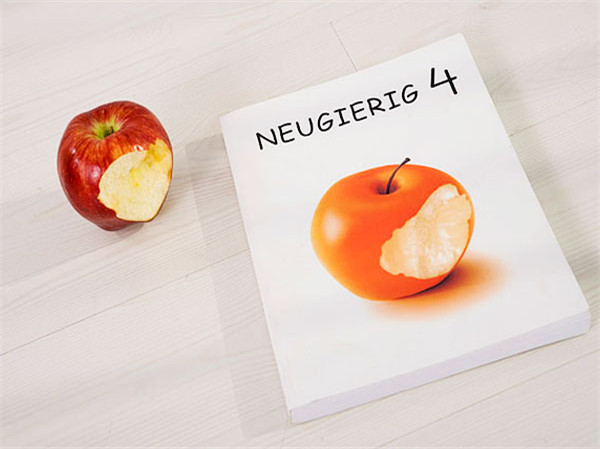现在大家在进行托福备考时官方真题Official托福模考软件相信是大家用的最多的工具了,对于托福成绩的提升是非常有帮助的。托福听力可以说是整个托福考试当中比较重要的一个部分,如何利用现有资料官方真题Official模考软件来提升大家的托福成绩呢?今天小编在这里整理了官方真题Official6托福听力Lecture2文本+题目+答案解析来分享给大家,希望对大家托福听力备考有帮助。

官方真题Official6托福听力Lecture2原文文本
Narrator: Listen to part of a lecture in a biology class.
Professor: OK, I have an interesting plant species to discuss with you today. Uh…it’s a species of a very rare tree that grows in Australia, Eidothea hardeniana, but it’s better known as the Nightcap Oak.
Now, it was discovered only very recently, just a few years ago. Um… it remained hidden for so long because it’s so rare. There are only about 200 of them in existence. They grow in a rain forest, in a mountain range…range in the north part of New South Wales which is uh… a state in Australia. So just 200 individual trees in all.
Now another interesting thing about the Nightcap Oak is that it is…it represents…uh…a very old type…uh…kind of tree that grew a hundred million years ago. Um, we found fossils that old that bear remarkable resemblance to the tree. So, it’s a primitive tree. A…a living fossil you might say. It’s relic from earlier times and it has survived all these years without much change. And it…it’s probably a kind of tree from which other trees that grow in Australia today evolved.
Just to give you an idea of what we are talking about. Here’s a picture of the leaves of the tree and its flowers. I don’t know how well you can see the flowers. They’re those little clusters sitting at the base of the leaves.
Okay, what have we tried to find out about the tree since we’ve discovered it? Hmm…or how…why is…is it so rare? It’s one of the first questions. Um… how is it…um…how does it reproduce? It’s another question. Um, maybe those two questions are actually related. Jim?
Student: Hmm …I don’t know. But I can imagine that…for instance, seed dispersal might be a factor. I mean if the…er…you know, if the seeds cannot really disperse in the wild area, then, you know, the tree may not colonize new areas. It can’t spread from the area where it’s growing.
Professor: Right. That’s…that’s actually a very good answer. Uh, of course, you might think there might not be many areas where the tree could spread into, er…because…um…well, it’s very specialized in terms of the habitat. But, that’s not really the case here. Um…the suitable habitat, that is, the actual rainforest is much larger than the few hectares where the Nightcap Oak grows
Now this tree is a flowering tree as I showed you. Um…um…it produces a fruit, much like a plum. On the inci…inside there’s a seed with a hard shell. It…it appears that the shell has to crack open or break down somewhat to allow the seed to soak up water. If the Nightcap Oak remains…if their seeds remain locked inside their shell, they will not germinate. Actually, the seeds…er…they don’t retain the power to germinate for very long, maybe two years.
So there’s actually quite a short window of opportunity for the seed to germinate. So the shell somehow has to be broken down before this…um…germination ability expires. And…and then there’s a kind of rat that likes to feed on the seeds as well. So, given all these limitations, not many seeds that the tree produces will actually germinate. So this is a possible explanation for why the tree does not spread. It doesn’t necessarily explain how it became so rare, but it explains why it doesn’t increase.
OK, so it seems to be the case that the species, this Nightcap Oak is not very good at spreading. However, it seems, though we can’t be sure, that it’s very good at persisting as a population. Um…we…there’s some indications to suggest that the population of the Nightcap Oak has not declined over the last. er…you know, many hundreds of years.
So it’s stayed quite stable. It’s not a remnant of some huge population that is dwindled in the last few hundred years for some reason. It’s not necessarily a species in retreat. Ok, so it cannot spread very well, but it’s good at maintaining itself. It’s rare, but it’s not disappearing.
Ok, the next thing we might want to ask about a plant like that is: What chances does it have to survive into the future? Let’s look at that.
查看官方真题Official6托福听力Lecture2的题目请进入下一页→→→
相关推荐
-
【官方真题Official托福阅读】官方真题Official3托福阅读词汇真题练习——pales&significance
2015-11-19![【官方真题Official托福阅读】官方真题Official3托福阅读词汇真题练习——pales&significance]()
-
【托福听力备考】官方真题Official听力高频词汇——文学讲座学科词汇汇总
2015-11-06![【托福听力备考】官方真题Official听力高频词汇——文学讲座学科词汇汇总]()
-
托福到底能考多少分?19年必练真题告诉你答案
APP专享![托福到底能考多少分?19年必练真题告诉你答案]()
-
【官方真题Official托福阅读】官方真题Official3托福阅读词汇真题练习——ensuing&initial
2015-11-19![【官方真题Official托福阅读】官方真题Official3托福阅读词汇真题练习——ensuing&initial]()
-
【官方真题Official托福阅读】官方真题Official3托福阅读词汇真题练习——guarantee&ensure
2015-11-19![【官方真题Official托福阅读】官方真题Official3托福阅读词汇真题练习——guarantee&ensure]()
-
【官方真题Official托福阅读】官方真题Official3托福阅读词汇真题练习——arduous&difficult
2015-11-19![【官方真题Official托福阅读】官方真题Official3托福阅读词汇真题练习——arduous&difficult]()
-
【官方真题Official托福模考】官方真题Official4托福阅读词汇真题练习 adjacent&nearby
2015-12-04![【官方真题Official托福模考】官方真题Official4托福阅读词汇真题练习 adjacent&nearby]()
-
官方真题Official4托福阅读词汇真题练习——rebound&decline
2015-12-04![官方真题Official4托福阅读词汇真题练习——rebound&decline]()
-
【托福阅读备考】官方真题Official1托福阅读词汇真题练习——plugged&washed
2015-11-09![【托福阅读备考】官方真题Official1托福阅读词汇真题练习——plugged&washed]()
-
官方真题Official5托福阅读词汇真题练习——promote&complicate
2015-12-09![官方真题Official5托福阅读词汇真题练习——promote&complicate]()
-
【官方真题Official托福阅读】官方真题Official3托福阅读词汇真题练习——devised&suggested
2015-11-19![【官方真题Official托福阅读】官方真题Official3托福阅读词汇真题练习——devised&suggested]()
-
【官方真题Official托福阅读】官方真题Official3托福阅读词汇真题练习——particular&final
2015-11-19![【官方真题Official托福阅读】官方真题Official3托福阅读词汇真题练习——particular&final]()
-
【官方真题Official托福阅读】官方真题Official3托福阅读词汇真题练习——integral&variable
2015-11-19![【官方真题Official托福阅读】官方真题Official3托福阅读词汇真题练习——integral&variable]()
-
官方真题Official8托福阅读词汇真题练习——disruption&exhaustion
2015-12-18![官方真题Official8托福阅读词汇真题练习——disruption&exhaustion]()
-
【托福阅读备考】官方真题Official1托福阅读词汇真题练习——autonomous&artistic
2015-11-09![【托福阅读备考】官方真题Official1托福阅读词汇真题练习——autonomous&artistic]()
-
【小站推荐】官方原题Official模考软件之考托模考测试题C1
2014-05-04![【小站推荐】官方原题Official模考软件之考托模考测试题C1]()
-
【托福听力备考】官方真题Official听力高频词汇——歌剧讲座学科词汇汇总
2015-11-06![【托福听力备考】官方真题Official听力高频词汇——歌剧讲座学科词汇汇总]()
-
官方真题Official5托福阅读词汇真题练习——overwhelm&powerful
2015-12-09![官方真题Official5托福阅读词汇真题练习——overwhelm&powerful]()
-
官方真题Official5托福阅读词汇真题练习——afford&offer
2015-12-09![官方真题Official5托福阅读词汇真题练习——afford&offer]()
-
【官方原题Official模考软件】小站推荐考托模考测试题B1
2014-05-04![【官方原题Official模考软件】小站推荐考托模考测试题B1]()
-
【官方真题Official托福阅读】官方真题Official3托福阅读词汇真题练习——unprecedented&virtually
2015-11-19![【官方真题Official托福阅读】官方真题Official3托福阅读词汇真题练习——unprecedented&virtually]()
定制专属课程规划
领取成功
添加助教,定制你的专属课程规划

每日提分任务
专业提分资料
全程督学答疑
























